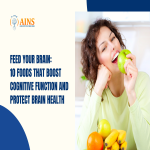Scoliosis is a condition characterized by an abnormal curvature of the spine, often diagnosed during adolescence. The spine typically has a natural forward and backward curve, but in scoliosis, it can take on an S or C shape.
Associated Anatomy
- Spine/Vertebrae: The primary structure affected by scoliosis.
Causes of Scoliosis
The exact causes of scoliosis remain largely unknown, though several factors may contribute:
- Genetics: Around 30% of adolescents with idiopathic scoliosis have a family history of the condition.
- Neuromuscular Disorders: Conditions affecting muscle control, such as muscular dystrophy and polio, can lead to neuromuscular scoliosis.
- Congenital Factors: Abnormalities present at birth can affect the development of spinal bones or ribs.
- Infections or Injuries: Damage to the spine from infections or trauma.
- Spinal Cord Abnormalities: Issues with the spinal cord may also lead to scoliosis.
Symptoms of Scoliosis
Symptoms may vary depending on the severity and location of the curvature, and can include:
- Nerve pressure in the lumbar spine, leading to pain, numbness, or weakness.
- Loss of height.
- An uneven waistline due to pelvic misalignment.
- Prominent ribs on one side.
- Unequal shoulders, with one shoulder blade protruding more than the other.
- A slight difference in hip height.
- Bulging or deformities in the back.
Stages of Scoliosis
Scoliosis is classified into three stages based on the degree of curvature:
- Mild Scoliosis: A curvature of less than 25 degrees, with a low risk of progression.
- Moderate Scoliosis: Curvature between 26 to 40 degrees, with a higher risk of worsening.
- Severe Scoliosis: A curvature exceeding 40 degrees, often necessitating surgical intervention.
Diagnosis of Scoliosis
Diagnosis typically involves a combination of:
- Physical Examination: A thorough assessment by a healthcare professional.
- Imaging Tests: X-rays, CT scans, or MRI scans to visualize the spine.
- MRI: Provides detailed images of internal structures.
- X-rays: Capture the spinal alignment.
- CT Scans: Offer comprehensive images of bones, muscles, and organs.
Treatment Options
Scoliosis treatment can be categorized as either surgical or non-surgical.
Non-Surgical Treatments: May include physical therapy to strengthen muscles, pain relievers, weight management, postural training, and daily stretching exercises.
Bracing and Surgical Treatments:
- Bracing: Back braces help prevent further curvature:
- Full-time Bracing: Worn for 16-23 hours daily.
- Nighttime Bracing: Worn for a minimum of eight hours each night.
- Surgery: Recommended when spinal curvature exceeds 40 degrees and shows signs of progression, typically involving spinal fusion.
- Bracing: Back braces help prevent further curvature:
Risk Factors for Scoliosis
Several factors may contribute to the worsening of scoliosis:
- Excess Weight: Increased weight can strain the back.
- Smoking: Impairs blood flow to the spine, limiting necessary nutrients.
- Degree of Curve: A larger Cobb angle indicates a higher risk of progression.
- Gender: Females are over seven times more likely to develop moderate to severe scoliosis than males.
- Curvature Location: Thoracic curvature is more likely to progress than lumbar curvature.
- Skeletal Growth: Adolescents with significant remaining skeletal growth have a greater chance of worsening curvature.
Complications of Scoliosis
Potential complications include:
- Breathing difficulties.
- Chronic back pain.
- Cosmetic concerns.
- Lower self-esteem due to physical appearance changes, such as uneven hips and shoulders.
Prevention Strategies
Primary Prevention: Regular exercise, good posture, and strengthening back muscles may help alleviate symptoms but cannot prevent scoliosis. However, preventing osteoporosis-related scoliosis is possible through a balanced diet and regular exercise.
Secondary Prevention:
- Follow nutritional guidance from a dietician.
- Adjust physical activities post-surgery as recommended by specialists.
- Avoid contact sports for a minimum of three months following surgery.
- Adhere to medication protocols provided by the surgeon.
- Implement a safe bathroom layout.
- Maintain a clean living environment.
Epidemiology
Scoliosis can occur in childhood or infancy but typically presents between ages 10 to 15, affecting both genders equally. Women are eight times more likely to reach a curve magnitude that requires treatment. Research indicates a scoliosis prevalence of 68% in a healthy adult population aged 70 and older.
Expected Prognosis
Many individuals with scoliosis can lead normal lives and participate in various activities, including sports. Prognosis can vary in adults depending on the type of scoliosis (idiopathic or degenerative) and the severity of symptoms. Untreated scoliosis may lead to pain and deformity, impacting mobility and daily function.
Natural Progression
Scoliosis often does not cause significant pain or health issues. Most individuals can maintain an active lifestyle. For those with moderate scoliosis, bracing is usually effective, while pain management and exercise may serve as initial treatments. Surgical options may be considered based on the curvature degree and progression potential.
Pathophysiology
Scoliosis involves the bending of vertebrae, which may also rotate, resulting in a corkscrew-like curvature. Curves below 25 degrees are generally not problematic, while those exceeding 50 degrees are classified as severe.
For further assistance or specialized care regarding scoliosis, please contact ANS Super Specialty Hospital.



















